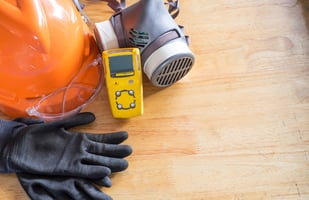Ensuring the safety and reliability of gas detectors in industrial settings is paramount to...
The Importance of Logging Gas Detector Issuance
Gas detectors are essential tools for ensuring safety in environments where hazardous gases might be present. Properly managing the issuance and return of these devices is crucial for several reasons, including traceability, responsibility, health monitoring, and compliance with safety regulations.
Traceability and Incident Investigation
Logging the issuance of gas detectors to individuals provides a clear record of who used the device and when. This traceability is vital in the event of an incident, as it allows for a detailed investigation into the circumstances surrounding the event. In the UK, the Health and Safety Executive (HSE) and other governmental bodies require thorough documentation during investigations. Data loggers integrated into gas detectors can provide crucial information, such as gas concentration levels over time, which can be analysed to understand the incident better and prevent future occurrences.
Ensuring Responsibility and Device Security
Assigning gas detectors to specific individuals and logging the time of issuance and return encourages accountability. When workers know they are responsible for the equipment, they are more likely to handle it carefully, reducing the risk of loss or damage. This practice is essential because, according to industry estimates, about 20% of gas detection devices are not returned, leading to data loss and increased costs for replacements.
Health Monitoring Over Time
Regularly logging the use of gas detectors can also contribute to long-term health monitoring. By tracking exposure levels over time, organisations can identify patterns that might indicate a risk to workers' health. This proactive approach allows for early intervention and the implementation of measures to reduce exposure, thereby protecting workers' health and well-being.
Compliance with Workplace Exposure Limits
In the UK, compliance with Workplace Exposure Limits (WELs) is mandatory under the Control of Substances Hazardous to Health Regulations 2002 (COSHH). Regularly logging gas detector data helps ensure that exposure levels remain within legal limits, thus avoiding potential penalties and ensuring a safe working environment. This compliance is not only a legal requirement but also a moral obligation to protect workers from harmful exposure.
Conclusion
The practice of logging the issuance and return of gas detectors is a critical component of a comprehensive safety management system. It ensures traceability, promotes responsibility, aids in health monitoring, and helps maintain compliance with safety regulations. By integrating data logging and real-time monitoring technologies, organisations can enhance their safety programs and protect their workers more effectively.






